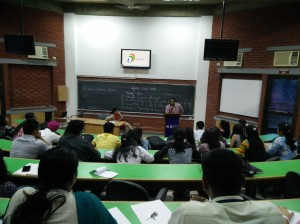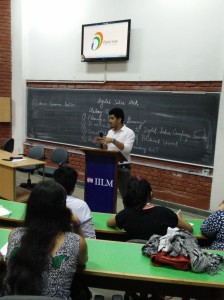Technology has evolved as one powerful tool and enabler that has changed human perception, behavior and significantly their lives. World has witnessed series of inventions and innovations since 18th century which has transformed human lives and business. These transformations have been ornamentally termed as Industrial Revolutions. At present the world is reaping the benefits of Industry 4.0 (or fourth industrial revolution).
The Previous Industrial Revolutions (first to third)
The first Industrial revolution started at the end of 18th century which primarily reduced our dependence on animal power and bio mass. Mechanization and steam power has replaced agriculture from center piece of economy and given the baton in the hands of manufacturing. A century later second revolution occurred leading to significant breakthroughs in the form of electricity, oil& gas explorations, chemical synthesis primarily ammonia and the boss of all- communication. The third industrial revolution begins in the second half of 20th century and major inventions were electronics, telecommunications, and computational prowess. The interesting observation in these revolutions was that there was a gap of century or more among the first three revolutions. However, the fourth revolution termed as Industry 4.0 started in less than 50 years of time gap and interestingly world has begun working on Industry 5.0; shrinking time line to less than a decade.
Industry 4.0
The fourth industrial revolution is the initiation of ‘cyber –physical systems’ unfolding new capabilities for people and machines. The technology is embedding itself into societies, human bodies and connecting devices and machines together. Some example of technological advancements of industry 4.0 includes machine learning; 3D Printing, connected devices (internet of things), smart factories, and genome editing, cryptographic methods like block chain are drafting new approaches to governance.
Industry 4.0 have offered tremendous opportunities to the business world by offering them huge volume of data collected through connected machines as well provide them with useful insights and patterns by analyzing the same. This helps business to optimize their operations and prioritizing the areas of attention. It is expected that by 2025 a quarter of world GDP will come from digital technologies like AI or cloud computing. The innovations brought by Industry 4.0 will bring more access to digital environment with long term benefits to scale, efficiency and productivity.
So much to achieve and leverage from yet evolving technologies of Industry 4.0 but humans are hungry for more and better and in less than a decades time world is introduced to the concept of INDUSTRY 5.0.
Explaining Industry 5.0
Industry 4.0 is already using advance technology, high end digitization, interconnected device with an aim to generate increased productivity with greater safety, quality and reduced waste. Then, the question arises what is the difference between Industry 4.0 and 5.0. Here is the answer:
Industry 5.0 will take the personalization of products to next level. Industry 4.0 allows you to work with and train your manufacturers but with Industry 5.0 businesses can allow the customers to customize their products. For example you can create your car with thousands of different variables by choosing from various mini websites like its color, interior, shape and lots of inbuilt features and app. Voila, you got delivered a car having best of features and more specifically what you desired. Take another example in medical field Type I diabetes measuring devices uses technology one size fits all and medical professional try to adjust and tweak the system of an individual by prescribing insulin doses. If we move to Industry 5.0 it provides individuals an app that follows their metabolism and produces a smaller, more discrete and robust device that’s custom made for the individual. So, for such patients it’s a life changing experience.
So Industry 5.0 focuses on the cooperation between human and machine. It is like Human cognition working in harmony with machine computing. Industry 5.0 brings human back to the center stage of production to work with collaborative robots leading to mass customization and delivering personalized products to every customer. The workplaces become bigger safer and allow freedom of design to work. The advanced stages of Industry 5.0 will allow the flow of real time seamless data between the field, the manufacturing process and the design. And the best part Human touch is back to the manufacturing.
It could be added further that the heroes of Industry 5.0 will be cobots and intelligent software applications. Collaborative robots are programmed to interact with humans in shared workforce. This use of artificial intelligence will facilitate employment rather than eliminating it. The collaborative dimension is the base of next revolution which is near and sure to come.
Is the world ready to welcome Industry 5.0?




